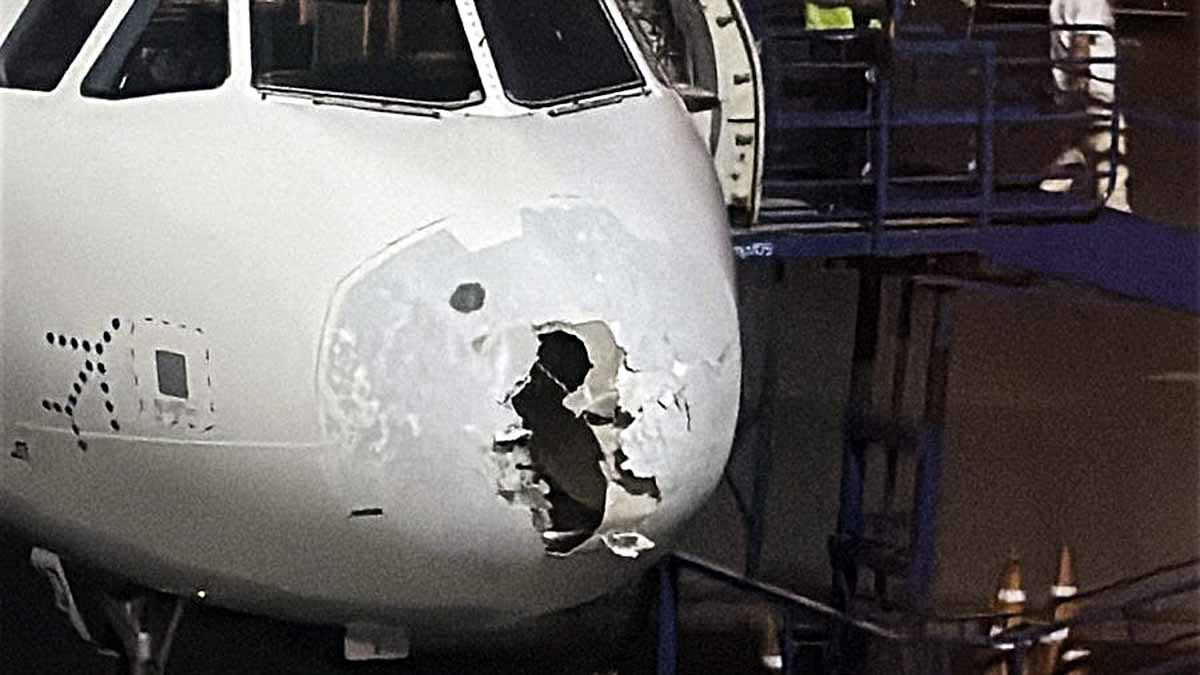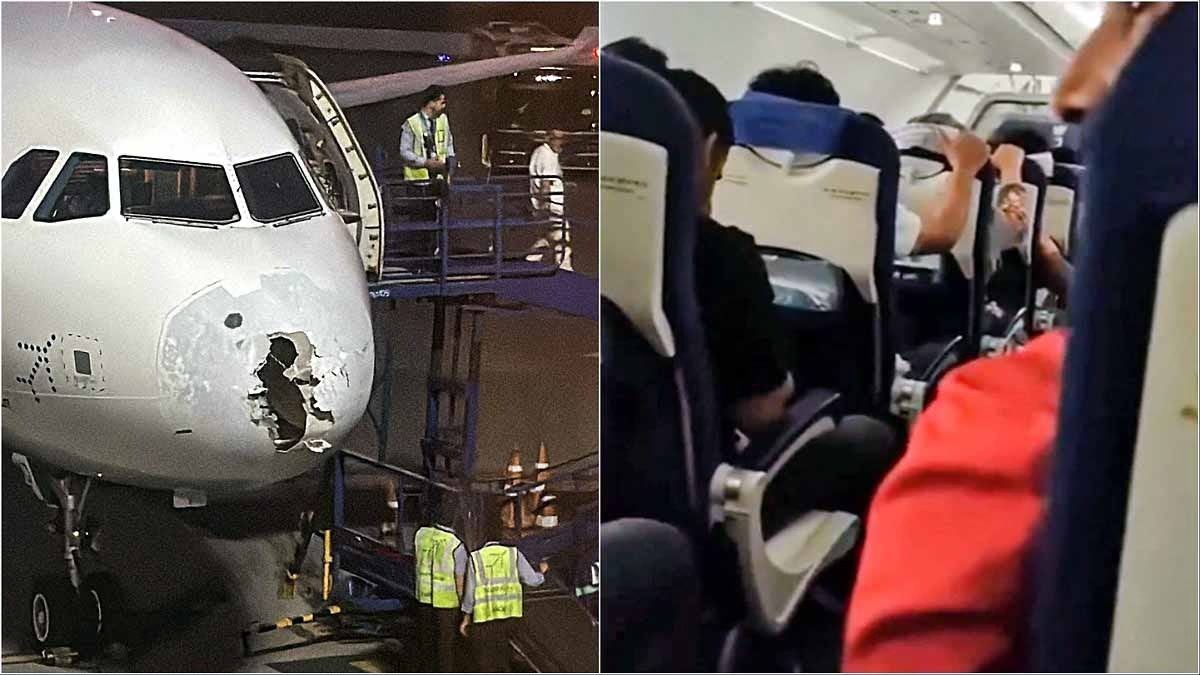On Wednesday, May 21, 2025, a Delhi to Srinagar Indigo flight encountered severe turbulence, creating panic among its 227 passengers. The flight was caught in a major storm, which led to this turmoil. This terrifying moment was captured by passengers and quickly went viral on social media.
The video shows passengers visibly shaken—some gripping their seats, others in prayer. The flight's nose was damaged, as shown in viral images post-landing. Despite this, the flight landed safely, highlighting the dangers of air turbulence.

Source: aajtak
What is Turbulence?
Turbulence occurs when there's a sudden change in wind speed or direction, often near clouds, storms, or the fast-moving winds of jet streams. The extreme turbulence faced by the Indigo flight was due to rapidly intensifying storms, with updrafts and downdrafts shifting the aircraft significantly.
Understanding Updrafts and Downdrafts:
In a storm, air moves swiftly up and down.
Updrafts:
When warm air rises quickly, it's called an updraft. This occurs mainly from the sun’s heat, as the ground warms and lifts the air. With rising warm air, airplanes can also be pulled upwards.
Downdrafts:
Conversely, when cold air descends, it's a downdraft. This happens when water droplets in clouds cool and fall. The resulting heavier air can pull planes down.

Source: aajtak
According to R.K. Jenamani of the India Meteorological Department (IMD), due to updrafts and downdrafts, an aircraft could vertically shift 2,000 to 6,000 feet. If a microburst—an intense downdraft—occurs, the risk increases substantially.
Indigo Flight's Calamitous Experience:
As Indigo's flight traversed a major storm, it first encountered powerful updrafts, ascending the plane by nearly 3 kilometers. Subsequently, downdrafts swiftly pulled it downward. Throughout, hailstorms formed, damaging the plane's nose. Jenamani noted that as air rises, water droplets freeze into hailstones, causing damage to the aircraft's front.
Could the Incident Have Been Avoided?
On that Wednesday, a significant storm swept across the northwest from Punjab to Uttar Pradesh. The pilot could have rerouted to avoid the storm, seeking entry into Pakistani airspace, but the request was denied, forcing a tumultuous journey through the storm. The pilot's adept handling ensured the plane maintained a safe altitude, mitigating further damage.




